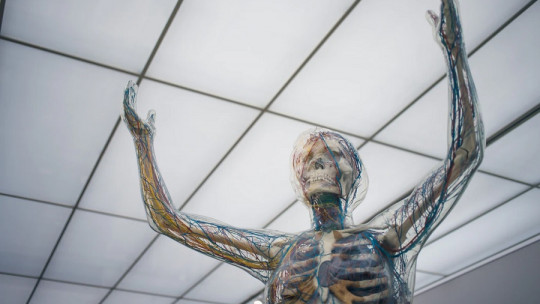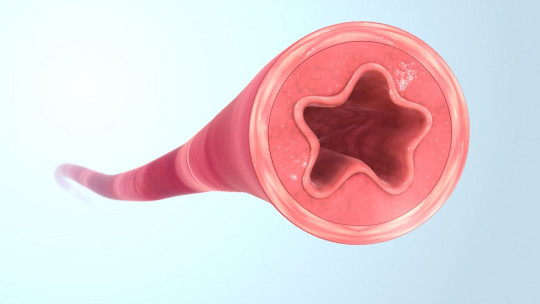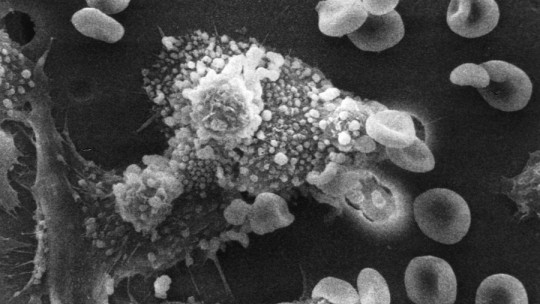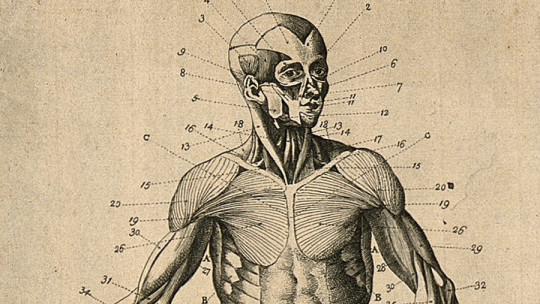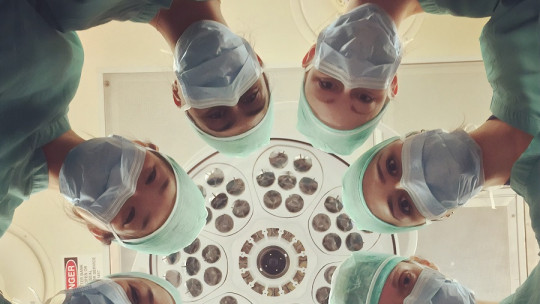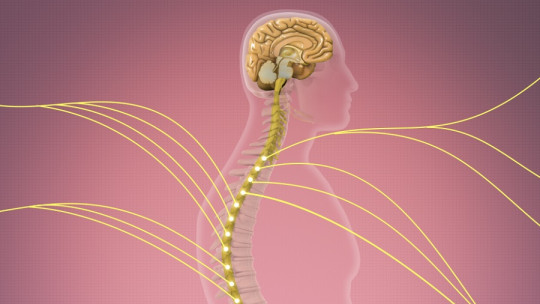Perception is a process carried out by all human beings. By definition, it is a brain mechanism where, through a series of associations of different stimuli, the brain interprets an internal reality about what is happening in the environment. Basically, perception could be defined as the physiological event of sensation.
Every living being is related to the environment, since one of the essential conditions that life itself must meet is the organism’s ability to communicate with the external, as well as nutrition and reproduction. Not all living entities relate in the same way to the environment, but there must be a certain degree of perception of what is foreign for life to be considered as such.
For example, some bacteria have structures known as magnetosomes inside, which, based on their alignment, allow the microorganisms to orient themselves magnetically in a water column. Phenomena as fascinating as this make us ask many questions: Do organisms have evolutionarily simple “senses”? What are the channels of perception that characterize human beings? Do we really have 5 senses? If you have doubts, don’t worry, because today we address all these topics and more.
What are the channels of perception?
The human perception channels or senses They are the physiological mechanism of sensation, that is, the reception of stimuli (external and internal) through the sensory organs The perception process occurs based on 3 pillars, which can be summarized in the following list:
Notably, Although experience is an intrinsically subjective factor, the rest of them can also be differentiated, although they follow the same process in all human beings For example, studies have shown time and time again that completely blind people try to “compensate” for their condition by developing auditory mechanisms of exceptional finesse. Although the biological process is the same, its development varies based on individual needs.
Types of perception channels in humans
We are going to tell you, briefly, what the 5 senses consist of. In any case, we do not delay too much, since we find it of special interest to record other reception channels that are not usually explored in humans. Go for it.
1. View
At a biological level, the sense of sight is considered one of the most important in human beings The organ that is responsible for receiving external stimuli and sending them to the brain is, this time, the eyes. When light passes through the cornea and lens of the eyeball (through the pupil), a real, inverted image is formed on the retina.
This stimulus in the form of an image is carried by the optic nerve to the cerebral cortex, where the interpretation of the message occurs at a psychic-chemical level. The eyes have approximately 125 million rods that help us see shapes and 7 million cones that differentiate colors, but we are not much less the living beings with the most developed sense of sight.
2. Ear
The sense of hearing allows us to capture the sounds that occur in the environment, a fundamental ability to locate ourselves in the three-dimensional environment and act based on what surrounds us. The ear picks up events in the environment through vibrations of the environment, which range between 20 and 20,000 hertz
In addition to hearing, the hearing system plays many more essential roles in maintaining human physiological integrity. For example, the vestibular system located in the inner ear is responsible for coordinating balance. Vertigo, dizziness and ease of accidents are clinical signs that characterize people with a damaged vestibular system.
3. Taste
Taste allows us to identify the flavors of the foods we are going to eat. The main organ involved in this channel of perception is the tongue, which is covered with taste buds that contain the sensory receptors necessary to form the concept of “flavor” (the taste buds).
As a curiosity, it should be noted that the widely cited “map of the language” reports very little information at a physiological and anatomical level. In fact, although there are certain differences in the concentrations of taste receptors in different parts of this organ, the variations have been considered insignificant. The process of tasting is much more complex than previously believed.
4. Touch
It is the perception of pressure, generally the skin. The sense of touch is essential for survival, since allows us to interpret when we are in danger based on a series of receptors specialized in the perception of various environmental characteristics We delve a little more into this concept in the following lines.
5. Smell
Smell is the sense responsible for processing and detecting odors, based on suspended particles present in the environment (it is chemical in nature, just like taste). Through inspired air, these molecules come into contact with the olfactory epithelium of the nasal cavity which, after a series of connections, sends messages to the olfactory bulbs. These are responsible for processing, encoding and directing information to other areas of the brain.
It is interesting to know that humans can detect about 10,000 different smells and that, at a culinary level, the sense of smell is considered an accessory to taste. Have you ever wondered why food doesn’t taste like anything when we have a cold? During this clinical condition, the olfactory receptors are isolated by nasal mucus and, therefore, we lose a very high percentage of information when it comes to interpreting what we are eating at the brain level.
Other “senses” in humans
There are more meanings to discover, although they are not directly related to the 5 main blocks that we have shown you Some of them are associated with touch, while others report internal information that is not linked to any of those previously mentioned directly. In this list, we present some of them:
It might be thought that thermoreception and nociception are events completely linked to the sense of touch, but this is not always the case. Intrinsically, “touch” encompasses everything that we can feel through the skin, but it turns out that heat, cold and pain can also be perceived in other internalized areas of the body that have little to do with the dermis and epidermis. .
An example of this is visceral nociceptors : Most of them are high-threshold unmyelinated or non-specific fibers, but they record the perceived damage to the organs of our body. In this case, information is received from within and, therefore, it is unreasonable to link such an event to touch.
Something similar happens with balanceception Yes, the balance system is located in the ear, but it is not explicitly and directly linked to hearing itself. A deaf person may have a correct sense of balance, although it is more difficult to maintain posture and avoid falls when such a large amount of information is missing as is collected by the ear.
Summary
As you have seen, the typical classification of perception channels fails on many fronts, no matter how useful it may be at an educational and informative level. For example, the map of the language has been refuted on multiple occasions, since dividing this organ into circumscribed and clearly delimited gustatory sections is, to a large extent, untrue.
On the other hand, human beings “feel” much more than what can be encompassed by sight, hearing, taste, touch and smell. The perception of our own body, the balance of our locomotor system, internalized pain and the perception of internal heat are physiological events that cannot be fully explained with the classical senses. These dilemmas show that, the more we know about our body, the more we have to know about it.
- The sense of sight, oftalvist. Collected on March 6 at https://www.oftalvist.es/blog/sentido-de-la-vista/
- The sense of taste, EDUMEDIA. Collected on March 6 at https://www.edumedia-sciences.com/es/media/478-el-sentido-del-gusto#:~:text=El%20gusto%20es%20el%20sentido,del%20sabor %20is%20the%20tongue.&text=Also%C3%A9n%20se%20illustrates%20the%20transmission%C3%B3n, through%C3%A9s%20of%20the%20nerve%20fibres.
- Ear functioning, RDR. Collected on March 6 at https://www.rdr.com.mx/functioning-del-oido/#:~:text=El%20sentido%20del%20o%C3%ADdo%20nos,movernos%2C%20no% 20let’s lose%20the%20balance.
- Perception as a means of development of the individual. (Fundamental factors.), UP. University of Palermo. Collected on March 6 at https://fido.palermo.edu/servicios_dyc/proyectograduacion/detalle_proyecto.php?id_proyecto=1126#:~:text=La%20percepci%C3%B3n%20es%20un%20process,que%20occurre %20in%20his%20environment.&text=The%20being%20human%20is%20distinguished,by%20his%20ability%20to%20reason.

